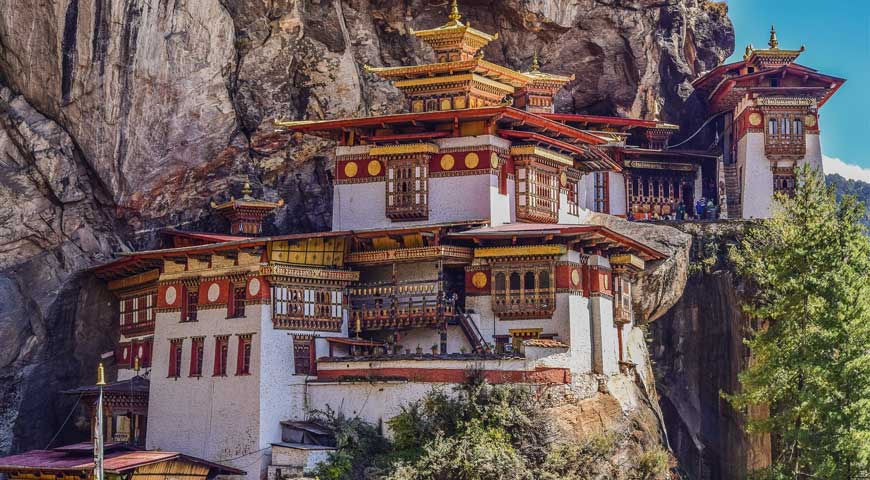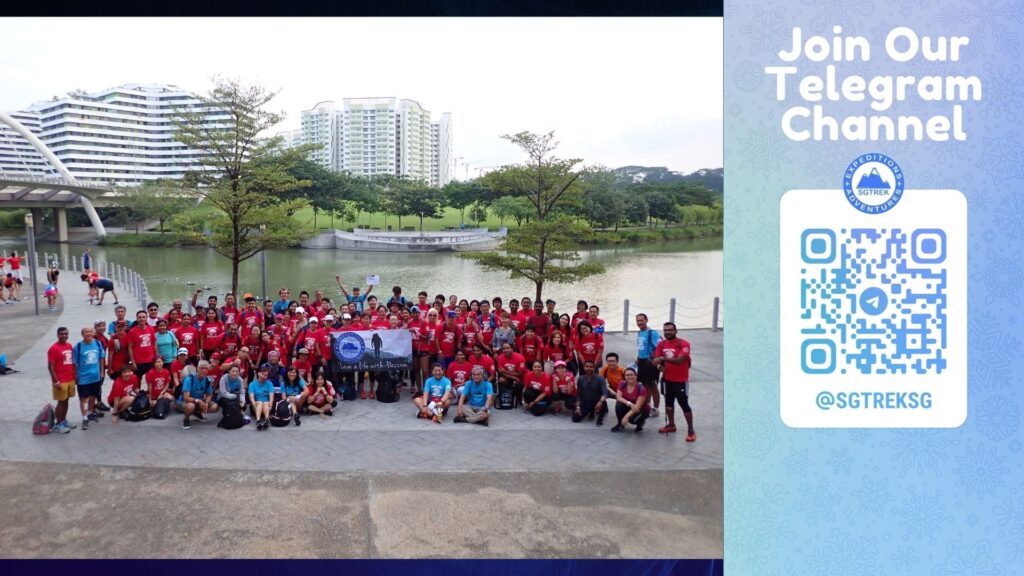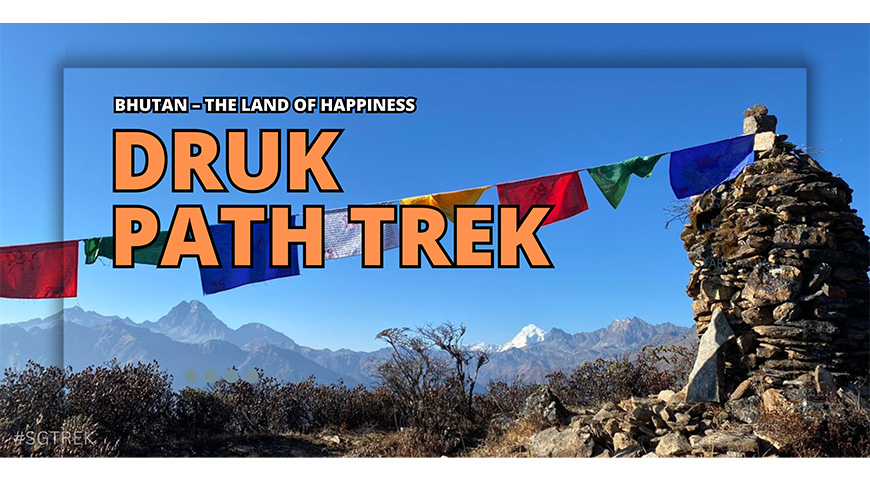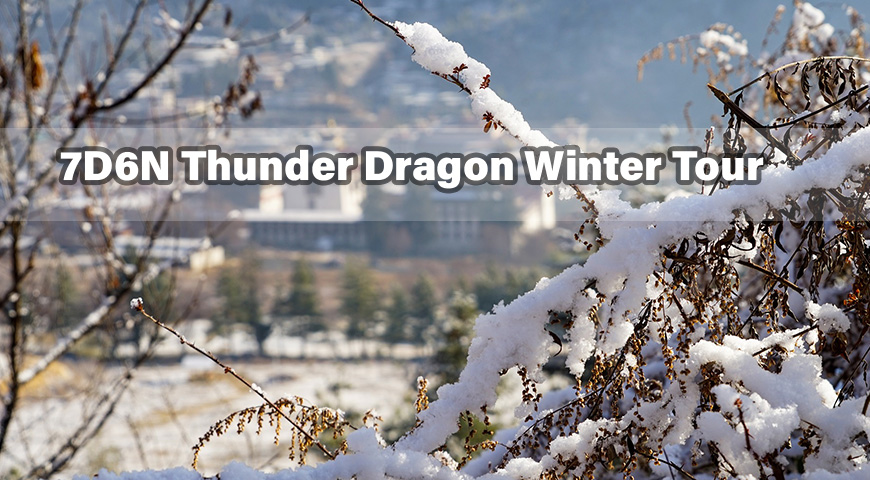
Thimphu Tsechu was initiated by the 4th Druk Desi (secular ruler of Bhutan), Gyalse Tenzin Rabgay in the 17th century. In the 1950s some changes were introduced in Thimphu Tshechu by the 3rd King of Bhutan, Jigme Dorji Wangchuck.
Tshechus are popular and colourful events where the entire community comes together to watch religious mask dances, receive blessings, and socialise. As well as the famous mask dances, tshechus also include colourful Bhutanese folk dances and other forms of entertainment.
 Festival Date: 13-15 Sep 2024
Festival Date: 13-15 Sep 2024
EVENT START DATES: 12 Sep – 18 Sep 2024
EVENT COST: SGD4800/Pax (Twin Sharing Basis) – Group Tour
- Promotional Prices : SGD4000/Pax – Including 2way flight (minimum 2pax to go on Twin sharing basis) signup before 29Feb2024
Payment Terms:
- First Term: Deposit $2000 for booking confirmation (Flight tickets will be reserved)
- Final Term: Final payment 4Months before to the trip.
STAFF CONTACT NO:
Do contact VIJAY +6592700908(WHATSAPP) or Email: contact@sgtrek.com
FLIGHT DETAILS:
 Singapore – Paro, Thursday,
Singapore – Paro, Thursday,
 Paro – Singapore, Wednesday,
Paro – Singapore, Wednesday,
- KB 541 SINPBH 12:30 16:45
- KB 540 PBHSIN 08:05 16:10
SIN-PBH-SIN in economy
*Airfare and taxes are subject to change without prior notice. Do check with us the prices during booking you tour with us.
TRIP DETAILS:
Day 1: Arrival in Paro and Transfer to Thimphu (Distance: 54 km, Estimated Driving Time: 1 Hour)
Welcome to Bhutan! Upon arrival at Paro International Airport, our representative will be there to greet you and assist you with your immigration formalities. From there, we will embark on a scenic drive to Thimphu, the capital city of Bhutan.
Once we arrive in Thimphu, we will check into our hotel and take some time to refresh ourselves. Afterward, we will begin our tour by visiting some of the city’s most iconic landmarks.
Our first stop will be Kuensel Phodrang, where we will marvel at the tallest Buddha statue in the world and take in the breathtaking panoramic views of the Thimphu Valley below.
Next, we will visit the Craft Bazaar, a vibrant marketplace that showcases the rich cultural heritage of Bhutan. With over 80 stalls, the bazaar offers a wide range of traditional arts and crafts, all handmade by skilled craftsmen and artisans from across the country. Here, you can purchase unique souvenirs and gifts to take back home.
We will also explore other handicraft stores in the area before retiring for the night at our hotel in Thimphu.
Join us on this exciting journey as we discover the beauty and charm of Bhutan!
Day 2: Exploring Thimphu and Driving to Punakha (Estimated Driving Time: 2 Hours and 30 Minutes)
After a delicious breakfast, we will embark on a journey to discover the hidden gems of Thimphu. Our first stop is the Royal Textile Museum Bhutan, also known as the Royal Textile Academy. This national textile museum is located near the Taj Tashi Hotel and Authentic Handicraft shops. Established in 2001, it boasts a vast collection of antique textile artifacts. Weaving is an integral part of Bhutanese culture and tradition, and the RTA aims to preserve and promote this living art to both international and domestic markets.
Next, we will visit the Weekend Market, held every Saturday and Sunday on the banks of the river. This bustling market is an excellent opportunity to mingle with the locals and experience the vibrant culture of Thimphu.
For sports enthusiasts, we will witness a game of traditional and modern archery, the national sport of Bhutan. This is one of the best places to capture stunning photographs of the archery match, as there is almost always a tournament being played.
After a fulfilling morning, we will travel to Punakha through the Dochula Pass, which stands at an impressive 3140 meters. The clear spring sky offers a panoramic view of the Himalayan Mountain ranges, and we will pass by the beautiful 108 chortens built on the hill by Her Majesty Ashi Dorji Wangmo Wangchuck, the Queen Mother of Bhutan, for the security and wellbeing of His Majesty, the King of Bhutan.
We will also visit the Druk Wangyal Lhakhang, a monastery built by Ashi Dorji Wangmo Wangchuck as a tribute to His Majesty the fourth King of Bhutan, Jigme Singye Wangchuck, and the armed forces after His Majesty led a successful operation against Indian militants who had occupied certain areas of Bhutan.
After exploring Thimphu, your next stop is Punakha, a region that has played a significant role in Bhutanese history. It is renowned for its breathtaking beauty and cultural significance. From 1637 to 1907, Punakha served as the capital of Bhutan, and its dzong remains a symbol of the country’s unity.
On your way to Punakha, make a stop at Metsina village for a delicious lunch. Afterward, visit the Chhimi Lhakhang Monastery, also known as the Divine Madman’s Monastery. This temple is famous for its fertility shrine, where visitors can receive a special blessing.
Next, head to the Punakha Dzong, situated on the island of the Pho-Chu and Mochu rivers. Built in 1637 by Zhabdrung Ngawang Namgyal, the dzong served as the religious and administrative center of the region. The dzong boasts the highest standards in woodwork, making it a must-see attraction.
In the evening, take a short walk through the Rinchengang and Lobesa villages, where you can interact with the locals and learn about their way of life.
Spend the night in Punakha and get ready for another exciting day of exploring Bhutan’s rich culture and history.
Day 3: Punakha Short Hike & Local Sightseeing
Start your day with a delicious breakfast before embarking on a short hike and local sightseeing. The Khamsum Yulley Namgyal Chorten Hike is a must-see attraction that takes you to the majestic Khamsum Yuelley Namgel Chorten. This stunning structure was built to promote peace, stability, and harmony in a world that is constantly changing. The Chorten offers breathtaking views of the Mo Chhu and the mountainous peaks of Gasa and beyond, making it a perfect spot for nature lovers and photographers.
After lunch, head towards Limbukha village, where you’ll walk across a suspension bridge that’s about 200 meters long. The fresh breeze and fascinating view of Dzong will leave you mesmerized. Follow the farmhouses as you gradually climb towards Dompala hills. The view of Dzong, Pho Chhu, Mo Chhu rivers, and surrounding villages is simply superb amidst chirpine forests. The climb is another two and a half hours to Limbukha, where you’ll find farmers growing Bhutan’s famous red rice, which is believed to have medicinal values. This rice needs clean mountain spring water to maintain its taste and nutritional value. Limbukha is also known for its love of peace and tranquility. Legends say that during medieval wars, the limpus or the people of Limbukha always volunteered as peace negotiators. This is also depicted during the yearly festival called Serda when the men carry peace flags instead of swords and fireworks.
End your day with an overnight stay at Punakha, feeling refreshed and rejuvenated after a day filled with adventure and exploration.
Day 4: Punakha to Thimphu (estimated driving time: 2 hours and 30 minutes)
After a delicious breakfast, we will embark on a scenic drive back to Thimphu. Upon arrival, we will check into our hotel and then head to the Thimphu Festival Venue.
The Thimphu Tshechu is one of the most significant festivals in Bhutan, attracting thousands of people from neighboring districts who come to witness the festivities. The festival lasts for three days, starting on the 10th day of the 8th month of the lunar calendar. Prior to the Tshechu, there are days and nights of prayer and rituals to invoke the gods.
The Tshechu was initiated by the 4th Desi, Gyalse Tenzin Rabgay in 1867, and initially consisted of only a few dances performed strictly by monks. These included the Zhana chham and the Zhana Nga chham (Dances of the 21 Black Hats), Durdag (Dance of the Lords of the Cremation Ground), and the Tungam chham (Dance of the Terrifying Deities).
In the 1950s, the third King Jigme Dorji Wangchuck introduced numerous Boed chhams (mask dances performed by lay monks), which added color and variation to the festival without compromising its spiritual significance. Mask dances like the Guru Tshengye (Eight Manifestations of Guru) and Shaw Shachi (Dance of the Stags) are enjoyed because they are similar to stage-theater.
Equally important are the Atsaras, who are more than just mere clowns. The Atsaras are the dupthobs (acharyas) who provide protection. The dances and jesting of the Atsaras are believed to entrance evil forces and prevent them from causing harm during Tshechus. Modern Atsaras have incorporated short skits into their performances to spread messages about health and social awareness. The Tshechu festival is also a welcome respite for farmers from their daily farm life. It is a time to celebrate, receive blessings, and pray for good health and happiness.
In addition to the festival, visitors can enjoy a leisurely evening stroll around Thimphu Town. And for a comfortable stay, overnight accommodations are available in Thimphu.
Day 5: Thimphu to Paro (Estimated driving time: 1 hour 30 minutes)
After a delicious breakfast, we will embark on a journey to Paro. Along the way, we will visit some of the most fascinating sites in Bhutan.
Our first stop is the Tamchog Lhakhang Bridge, located on the other side of the river of the Thimphu-Paro highway. To reach the Lhakhang, we will cross an iron chain suspension bridge, which was constructed by a 13th-century Tibetan saint, Thangthong Gyalpo. This Buddhist saint was not only an architect but also a blacksmith. Of the many iron chain bridges built, only a few remain in use today. Crossing this old bridge can be a thrilling experience for tourists. Some of the original iron chain links used to build this bridge can be found on display in the National Museum in Paro.
Next, we will head towards Paro city, which is about a 30-minute drive from Tamchog Lhakhang. Here, we will witness the breathtaking bird’s eye view of Paro International Airport, the only international airport in Bhutan. This small airport has a single runway and very few international flights. However, it is considered one of the most dangerous airports for landing and also the most beautiful airport in terms of landscape and architecture.
After checking into our hotel, we will visit the National Museum, housed in the Ta Dzong (watchtower). Here, we will explore an intriguing collection of artifacts that provide a wonderful introduction to the rich culture and heritage of the Kingdom.
In the evening, we will take a leisurely stroll through the charming Paro town and visit local handicraft stores. This will be a perfect opportunity to pick up some souvenirs to take back home.
Overnight stay in Paro.
Day 6: A Scenic Hike to Taktsang Ghoempa (Tiger’s Nest Monastery)
Start your day with a hearty breakfast before embarking on a breathtaking hike to Taktsang Monastery, also known as the ‘Tiger’s Nest.’ The hike to the viewpoint takes approximately 1-1.5 hours, depending on your fitness level. Once you reach the viewpoint, you’ll be rewarded with a stunning panoramic view of the monastery perched on the side of a cliff. Take a break and enjoy some refreshments at the View Point Cafeteria before continuing your hike to the monastery, which takes about an hour.
Legend has it that in the 8th century, Guru Rinpoche flew on the back of a tigress from eastern Bhutan to this very spot and meditated in a cave for three months. The principal Lhakhang (monastery) of the present monastic complex dates back to 1692. Unfortunately, Taktsang suffered severe damage from a fire in 1998, but it has since been fully restored to its former glory.
After exploring the monastery, make your way back downhill to the road, stopping for a delicious lunch at the Viewpoint Cafeteria along the way. From there, drive to Drukgyel Dzong, a fortress situated on a ridge in the upper Paro valley, just a 30-minute drive north of Paro town.
Experience the beauty and history of Bhutan on this unforgettable day hike to Taktsang Ghoempa and visit to Drukgyel Dzong. Drugyel Dzong, also known as the “Fortress of Victorious Drukpas,” was constructed in 1649 by Zhabdrung Ngawang Namgyel. This impressive fortress served as a crucial defense base for the region until 1951 when it was tragically destroyed by fire. Despite its ruins, the Dzong remains an important monument that links the people of Bhutan to the great events that contributed to the country’s sovereignty.
Drukgyel Dzong was solely used for defensive purposes and did not serve any administrative or religious functions. It was built to protect against external threats from the border. The existing ruins of the Dzong are relatively well-preserved, allowing visitors to easily understand and distinguish the complex’s features. Although most of the timber components of the Dzong, such as roof trusses, door and window frames, floors, and ceilings, are almost entirely absent, the major portion of stone and rammed earth wall structures still stand. These structures provide visitors with a glimpse into the ideas and practices of defense during ancient times.
In April 2016, His Majesty the King commanded the reconstruction of the fortress to celebrate the birth of His Royal Highness The Gyalsey and to commemorate the arrival of Zhabdrung Ngawang Namgyal in 1616 AD, the birth year of Guru Rinpoche. The restoration work is estimated to be completed soon.
A visit to Paro offers the opportunity to experience the rich history and culture of Bhutan, including the impressive ruins of Drugyel Dzong. Spend the night in Paro and immerse yourself in the beauty and wonder of this fascinating country.
Day 7: Depart Paro
we will bid farewell to Paro. Following a delicious breakfast, we will embark on a scenic drive to the Paro airport for our departure.
*this tour is based on weather conditions. Subjective to changes.
What’s Included/Excluded
Cost Includes
- International Flights (SG-Paro-SG) – Druk Air
- Breakfast and dinner at respective hotels and lunch at local tourist standard restaurant
- Accommodation (Twin Bed / Double Bed sharing basis) in 3-star hotel.
- All transportation within the country including airport transfers.
- Daily Sustainable Development Fee
- Entrance fees for Museums and Monuments.
- English Speaking Local guide.
- Bhutan Visa fee
Cost Excludes
- Single room supplement charges SGD300/Pax for entire trip
- Travel Insurance
- Payments for service provided on a personal basis.
- Cost for any services not mentioned in the “Cost Include head”.
- Cost incurred due to mishaps, strikes, political unrest etc.
- Personal expense in items such as laundry, soft drinks, Camera Charges, bottled water,
- Incidentals, Portage, Bellboy charges tips or any other services
3-star hotel we provide:
Thimphu- Mantra Home or similar
Punakha: Hotel Lobesa or similar
Paro : Riverfront Hotel or similar
Note: The hotels are provided based on room availability during the time of tour confirmation.
By Joining this trip, YOU:
- Acknowledge all the TERMS & CONDITIONS: https://sgtrek.com/terms-conditions/
- Acknowledge that YOU have read and agreed to RELEASE OF LIABILITY, WAIVER OF CLAIMS, EXPRESS ASSUMPTION OF RISK AND INDEMNITY AGREEMENT FORM of (SGTREK) : https://sgtrek.com/sgtrek-indemnity-form/
- YOU have read all the above paragraphs and YOU know, understand, and appreciate these and other risks that are inherent in The Activity. YOU hereby assert that your participation is voluntary and that YOU knowingly assume all such risks.
- YOU acknowledge the agreement freely and voluntarily, and intend by completing this form and unconditional release of all liability to SGTREK PTE. LTD.
TERMS & CONDITIONS: https://sgtrek.com/terms-conditions/
For any queries related to the event do contact below person:
Phone: +65 92700908 (WhatsApp)
Email : contact@sgtrek.com
This trip is organized by:
SGTREK PTE. LTD.
Reg. No. 201816267K
STB License No. 03160
Address: 28A, Kandahar Street
Singapore 198889
Email: contact@sgtrek.com
WhatsApp: +6592700908
Website: https://sgtrek.com








